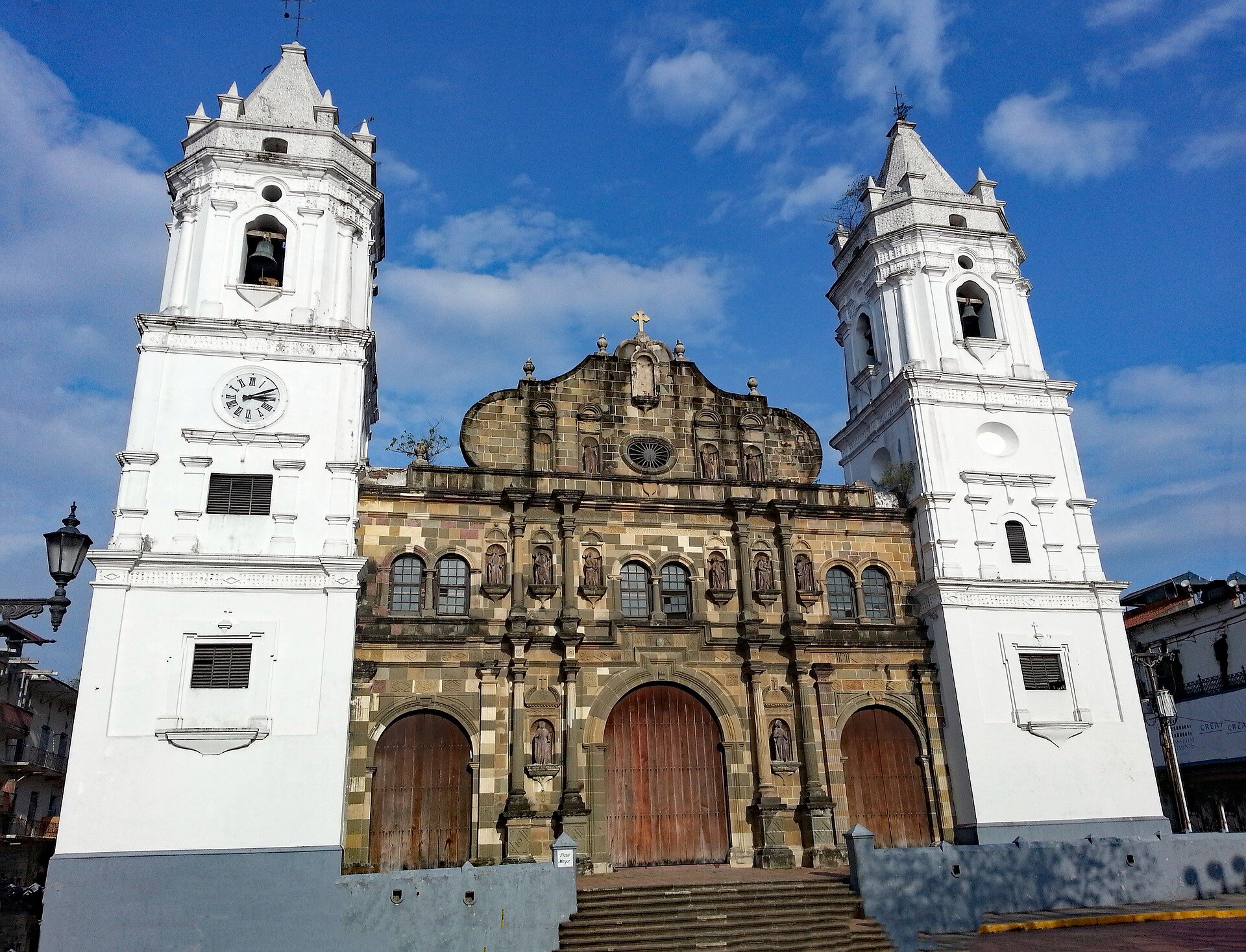The historic district, known as Casco Viejo, or San Felipe, is one of the most popular sites for tourists in Panama City. Settled in 1673, Casco Viejo was built to replace the original settlement, Panamá Viejo, which was destroyed upon the arrival of British pirate Henry Morgan in 1671. The Spanish forces in Panama tried to defend the settlement, however after losing over 400 men, Governor Juan Perez de Guzman had the city set on fire in order to prevent looting. Despite much of the city being destroyed, the pirates spent three weeks looting whatever they could. Ruins from Panamá Viejo still remain, and are a popular attraction for tourists. Construction of Casco Viejo began in 1672, 8km southwest from the original settlement. Casco Viejo was declared a UNESCO World Heritage Site in 1997.
As roughly 85% of Panamanians identify as Roman Catholic, The Seven Churches of Casco Viejo are a popular destination for both tourists and locals alike. During Holy Week, many devotees make the pilgrimage to each church in order to pray for health and good fortune.
Catedral Basílica Santa María la Antigua
Construction for this church, also known as the “Sacred Heart Cathedral”, began in 1688. Service began in 1694, however it was not consecrated until 1796, due to a number of complications that arose during its construction. Seven limestone steps, which are representative of the seven deadly sins, lead up to the entrance of the church. The two towers, which are plated in mother of pearl, were once the tallest structures in the city. A crypt underneath the main altarpiece is the burial place for the archbishops of Panama. The church was declared a Historical National Monument in 1941, and is now a World Heritage Site. The church is open daily from 7am-7pm. Many people visit in order to see Pope Leo XIII’s cross, which promises 100 days of indulgence to those who kiss it and recite the Lord’s Prayer. In January 2019, Pope Francis inaugurated the cathedral after its restoration was completed.
Nuestro Señora de la Merced
Known in English as “Our Lady of Mercy”, this church is the only one of the seven that has managed to retain its original wooden ceiling. It is located beside the original entrance of the walled city, and was the first structure visitors would see upon entering by land. After the destruction of Panamá Viejo in 1671, parishioners transported the stones from the original baroque facade of 1620 to its current location, where it was rebuilt. They donated all remaining stone to help with the construction of the walls of the new city. The church was completed in 1680 and contains two atriums; one is the chapel of Our Lady of Mercy and the other is a mausoleum. In 2009, the church’s sacristy was converted into a museum that now holds a nativity scene, various artifacts and documents of great religious and historical value that date back to 1743. The chapel also contains a painting that many believe came from the original church in the Old City. The church holds daily service and is open to the public from 6:00am - 7:30pm.
San Felipe Neri Oratory
First inaugurated in 1688, this church has been home to many different things throughout the years; a seminary, a home for the elderly, a university headquarters, a jail, and a barracks during the Thousand Days War. After being affected by a number of fires throughout the 18th century, the building was given to Saint Vincent of Paul Charity in 1875. The building had its first restoration in 1913, in which the original walls of 1688 were conserved. Some notable features include its colonial pulpit, a double-level wooden choir, a large nativity scene, and fourteen Stations of Cross composed of enamel glass.
Iglesia de San José
Originally built in 1612, this church has been destroyed and rebuilt multiple times throughout the centuries. After its final rebuilding in 1737, it was sold and converted into a college chapel in the late 19th century. Home to the famous golden altar - which is actually made of wood and covered in gold flakes - this church is one of the most popular visiting sites for tourists in Casco Viejo. Legend states that during the siege of 1671, Jesuit priests painted the altar black in order to conceal its identity from the pirates; the truth, however, is that the altar was not actually covered in gold until 1915. Aside from the astounding golden altar, this church also boasts a beautiful stained glass window of Saint Rita of Cascia, the Patron Saint of Lost Causes. Photos are permitted in this church any time outside of its regular service.
Iglesia de San Francisco de Asís
Located in the prominent Plaza Bolivar, this small yet impressive church is within walking distance of a number of other touristic sites; the Teatro Nacional is directly across the street and the Palacio de las Garzas (home of the president) is just one block away. Originally built in the early 18th century, this church has been repeatedly destroyed by fires and rebuilt. It was last rebuilt in 1998, though it has managed to retain its original foundation. It possesses eight hardwood altars that were designed by Indigenous artisans in the baroque style. The main altar is a great example of colonial art. It is made up of over 400 pieces of tropical cedar that have been colourfully hand painted.
Capilla Juan Pablo II (Juan Pablo II Chapel)
Also known as the “Chapel of the Presidency”, access to this church is more restricted than that of the others. It can be visited by worshippers during Holy Week as a part of the Seven Churches pilgrimage.
Santa Ana Church
Named after the Count of Santa Ana - who was the main benefactor - this church was first consecrated in 1764. It was rebuilt nearly one hundred years later, after being destroyed in a fire in 1854. It was declared a National Historic Monument in 1980. Although it does not officially belong to Casco Viejo, it is included in the Seven Churches during Holy Week due to its proximity to the others.
If you are interested in taking an awesome self-guided walking tour of Panama City, check out the GPSmyCity app here:
https://www.gpsmycity.com/gps-tour-guides/panama-city-471.html




